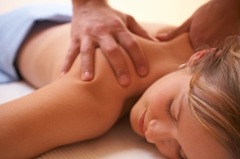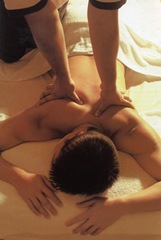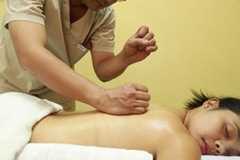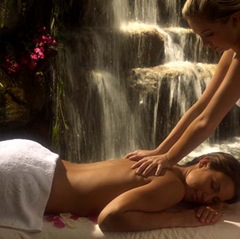Unlike Western types of massage, Eastern massage applies principles based on more traditional  principles, such as the body’s energy source or Chi, pressure points, and Chinese meridians of the body.
principles, such as the body’s energy source or Chi, pressure points, and Chinese meridians of the body.
Two great examples of Eastern massage therapy are Shiatsu (acupressure) and Reflexology. To learn more about reflexology, auriculotherapy, and acupressure, read this and find out how massage therapy can be an effective and natural way to provide pain relief.
Another type of Eastern massage is decongestive lymphatic therapy. Read on to find out more about this type of massage therapy.
What is lymphatic therapy?
Lymphatic therapy is a type of Eastern massage that aims to reduce the congestion of the lymphatic system. It is a rather complicated massage, which includes bandages, skin care, certain exercises, and manual lymphatic drainage (also known as MLD).
MLD involves a gentle massage aimed at treating lymphedema. Areas closer to the heart are treated first so that any lymph drainage from more remote parts of the body do not flood these areas. Manual lymphatic drainage aims to stretch out the collecting ducts of the lymphatic system and to promote drainage. After the manual drainage, bandages are used to provide a compressive effect. A person undergoing lymphatic therapy will also be taught how to care for his skin and for his health in general.
What are the other types of massage?
There are many other types of message. For example, Western massage involves effleurage, deep friction, tapotement, and petrissage. Read more on effleurage and petrissage in this article. Find out about deep friction and tapotement and how they provide natural pain relief right here. These types of massage provide different benefits through different physiologic mechanisms.
Massage therapy has long played an important role among people with different ailments and body aches. Known for both mechanical and psychological effects, massage therapy is a natural means of promoting one’s health and improving the body’s capacity to heal. More studies are needed to prove how exactly massage and touch therapy have become powerful tools to both the Eastern and Western world.
For instance, did you know that a healthy, well-fed baby will die if deprived of human touch? Read more on this report by clicking here.
 Below are a few types of Eastern massage:
Below are a few types of Eastern massage: Tapotement involves sudden, compressive blows on the muscle or skin. The following are usually done in tapotement:
Tapotement involves sudden, compressive blows on the muscle or skin. The following are usually done in tapotement: Below are a few examples of massage:
Below are a few examples of massage: